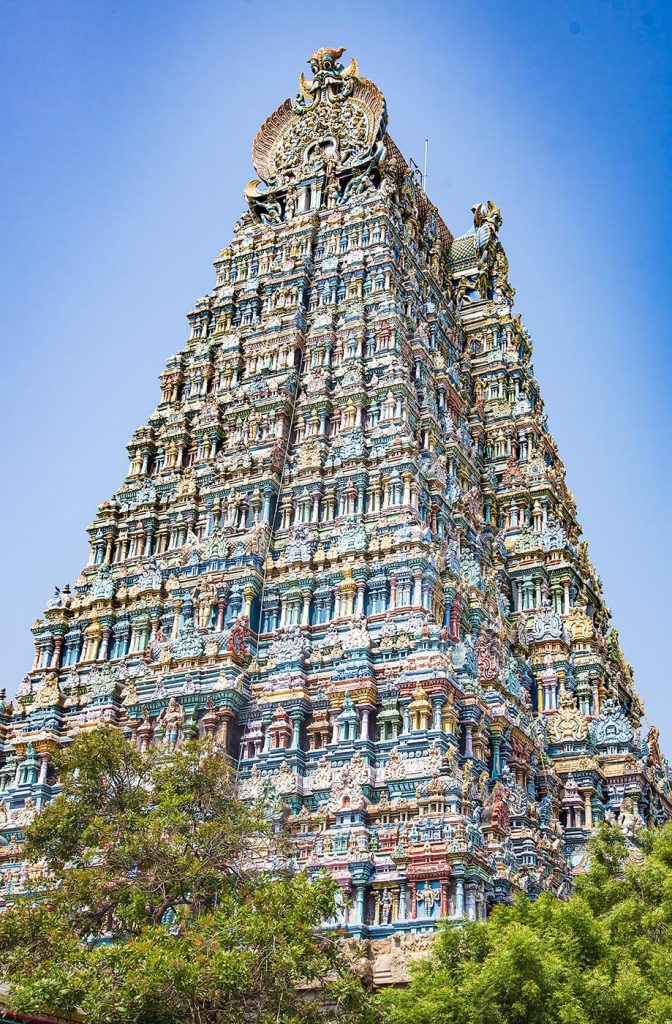From the grand Meenakshi citadel to hundreds of roadside shrines, explore the historic streets of this deeply devout South Indian city
Photos & Story By Anne Petry
Lord siva’s blessings might explain the richness of Madurai’s religious heritage. The city has been a major settlement place for two millennia; its historical records stretch more than 2,500 years. Founded by the first Tamil dynasty, called Pandya, Madurai today has a population of over 1.5 million. Sometimes called the Lotus City or the Athens of the East, it is one of the oldest and holiest cities in India.
It is believed the name Madurai comes from Madhurapuri (sweetness), after the divine nectar that poured from the hair of God Siva while He was blessing the town. More prosaically, the word Madurai could also be a derivative of Marutham, meaning “fertile area.” Whatever the origin, two things are certain: millions of Indians come every year on pilgrimage to this ancient city, and the inhabitants are undoubtedly among the most religious people in the country.
Follow me for a walk in the historical quarter to learn more about the famous Meenakshi Temple, and also to discover some of the hidden temples in which the locals pray, meditate, gather or work.

In big towns, people are easily overwhelmed by their busy, modern lifestyle, disconnected from nature and animals, more interested in the Internet than the inner worlds. The newer part of Madurai is no exception to this rule, with its brand-new shopping malls and elegant restaurants, monstrous traffic jams, constant noise and large crowds. The old part of the city is a whole other story. Nowhere else in India have I seen a big city with so many shrines and temples in every street, every corner.
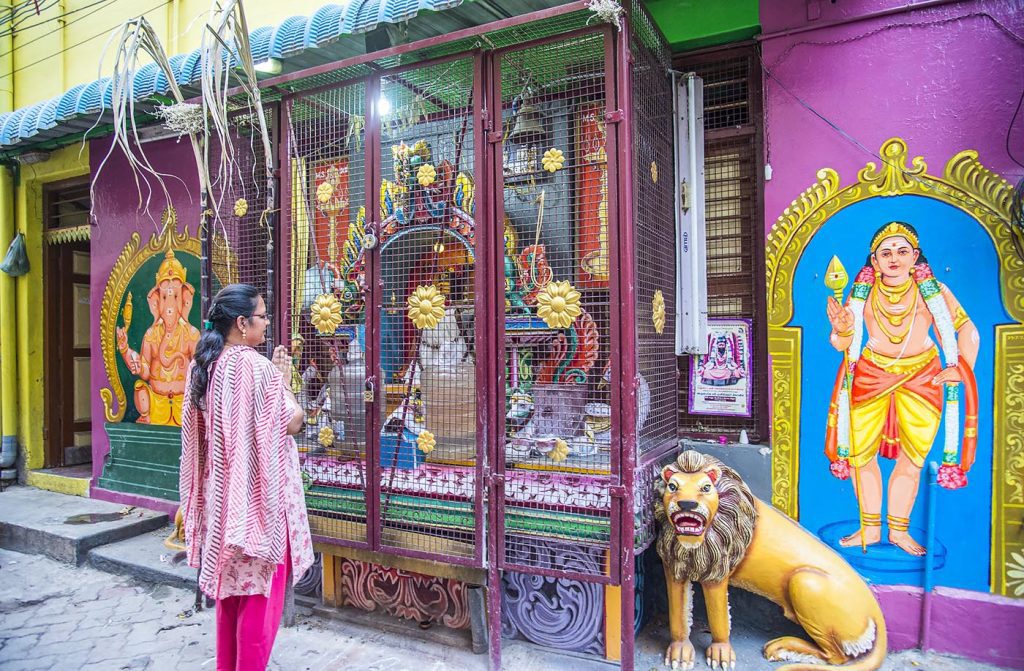
Strolling through the ancient, narrow streets, there is a kind of village atmosphere. One can see cows being milked in front of a temple, goats lying next to a shrine or hens looking for something to peck at between two religious statues. In the heart of ancient Madurai, women take time to create the traditional floor paintings called kolam, men wear the conventional dhoti, groups of children in uniforms with bags bigger than themselves happily skip to school, and many people still walk barefoot.

Ram, born and raised in Madurai but now living in another town, told me, “It always feels good to come back to Madurai, because here I find the values of humble and authentic people, which are kindness and attention. The people here actually care about each other, just as they care about the visitors who come to their city for religious or tourist reasons. They cherish their city for its importance in the history of Lord Siva and are very devout believers. They do not question anything in Hinduism but simply practice their religion as it has been done for centuries. Religious habits are strongly rooted in the locals’ daily lives, and even today young people go to the temples by themselves, because they have a deep faith in the Hindu Gods.”
This loyalty to Hindu Deities is very much alive among the local population. Early morning is the time when the temples are busiest, as no one would start their day without doing a few circumambulations, a puja or a quick prayer. It doesn’t need to be long, but going to the temple or stopping in front of a shrine seems to be a necessity for most residents. Throughout the day, while walking around the city, one can see a young auto-rickshaw driver stopping his yellow vehicle in front of a temple to get a quick blessing from the priest. A mother with her child in her arms lines up at the window of a temple to give money as an offering. A man stuck in traffic spontaneously gets off his scooter to light a candle for his Gods. Another takes off his shoes and lies down in the middle of the street, in the front of a temple, face down, to make a long prostration.
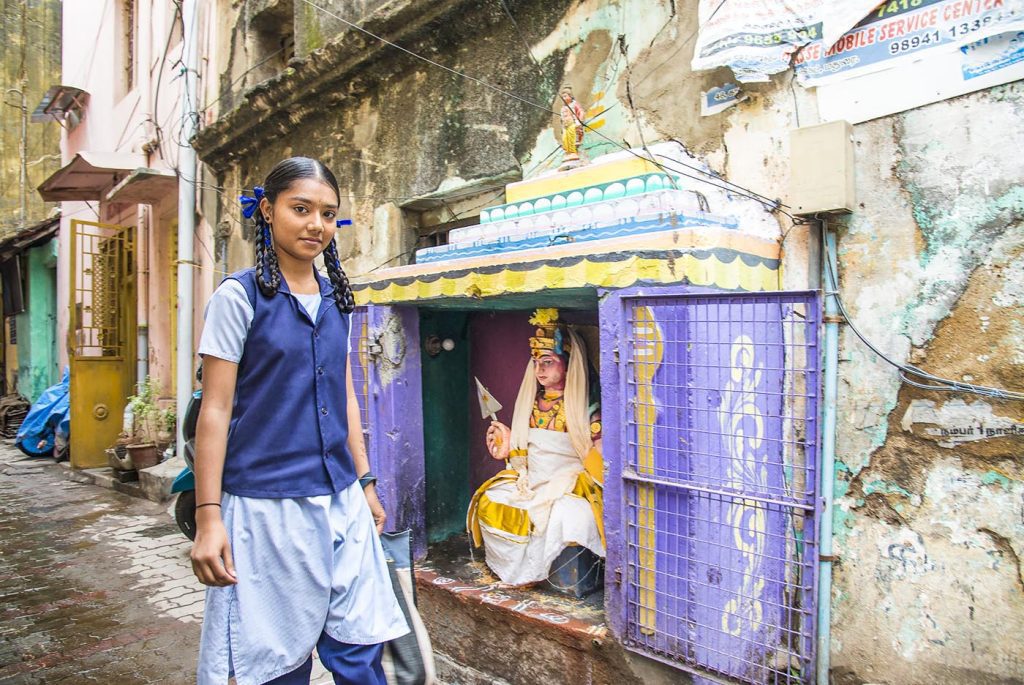
Sudharsan is the perfect example of this intense faith. He is a 40-year-old priest whose father before him officiated in the same temple. He comments, “This 300-year-old temple, where I work and spend my days, has always been a part of my life. In fact, my earliest memories are in this temple as a small child. At the age of six, I started learning the duties of a priest. I never had to think about what studies or work I would do, because I always knew that my life would be here in this temple, practicing my religion. Becoming a priest was a kind of legacy that my father left me, and I am fully happy to be a part of people’s lives.”
Although modern spiritless buildings have invaded the ancient streets, there are still many old structures, such as colonial houses and centuries-old temples and shrines. Being so much part of their environment, locals fully adapt these traces of the past into their modern existence. They have combined a small temple with a scooter repair store, a medium-sized shrine with a taxi stand and turned a broken statue into a chair used by a couturier for sewing. Very often the inside of a temple becomes a meeting place for friends who want to have a quiet chat.
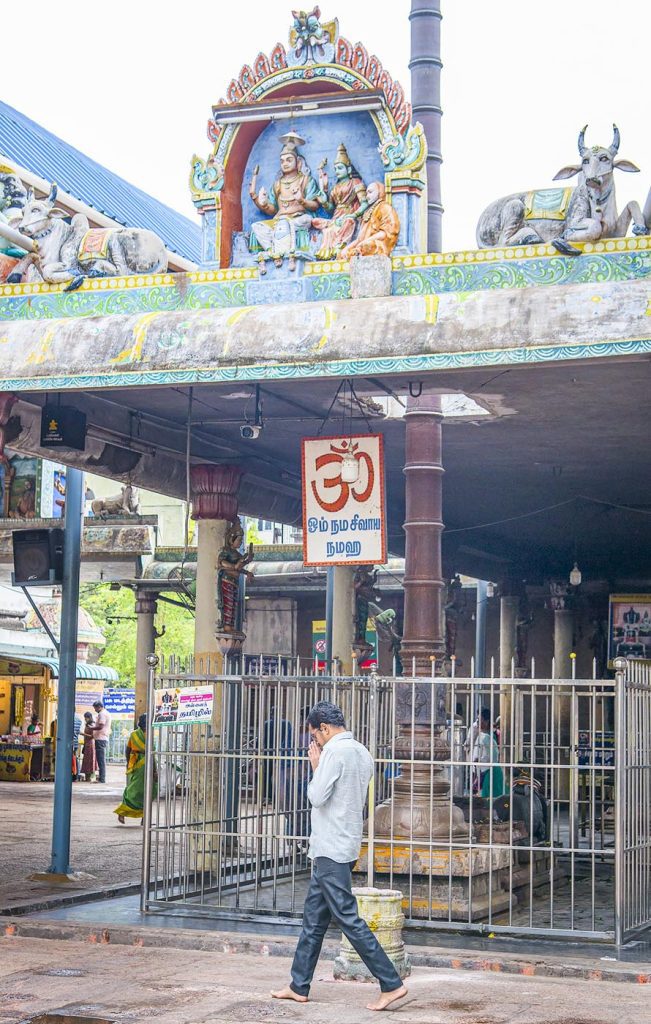
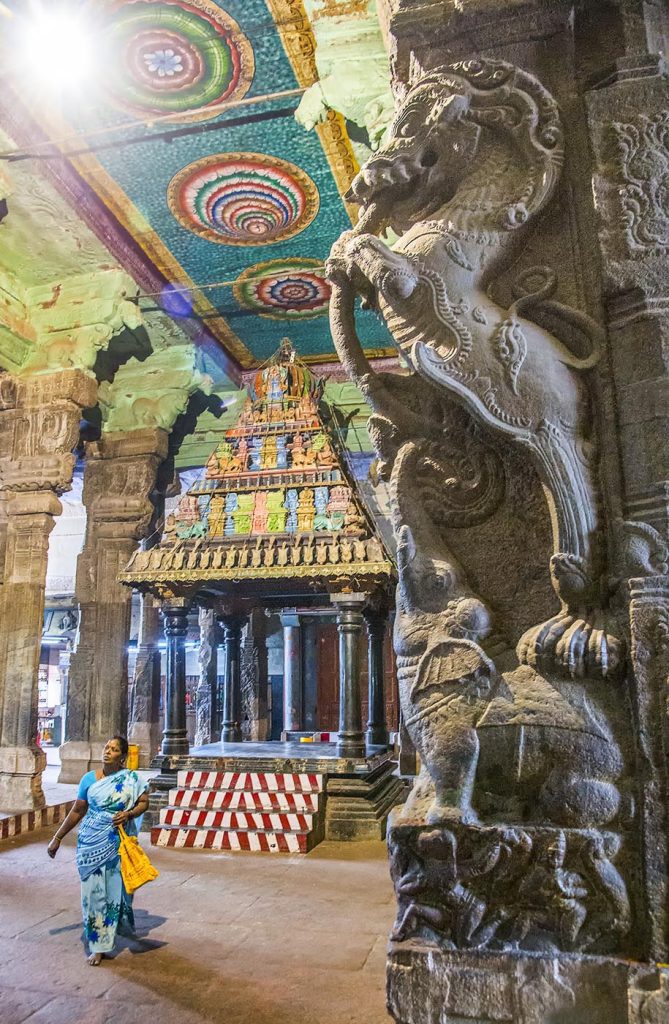
The historical and religious heritage has been integrated in the modern way of life, mostly for the better and unfortunately sometimes for the worse. In the famous Elukadal Street, the beautiful, ancient carved walls are now used to hang all sorts of things like shoes, pots or blankets, turning this authentic street into a shopping arena. All in all, it is inspiring to see how history and religion are an integral part of the lives of the townsfolk and are not something separate from them or their daily routine.
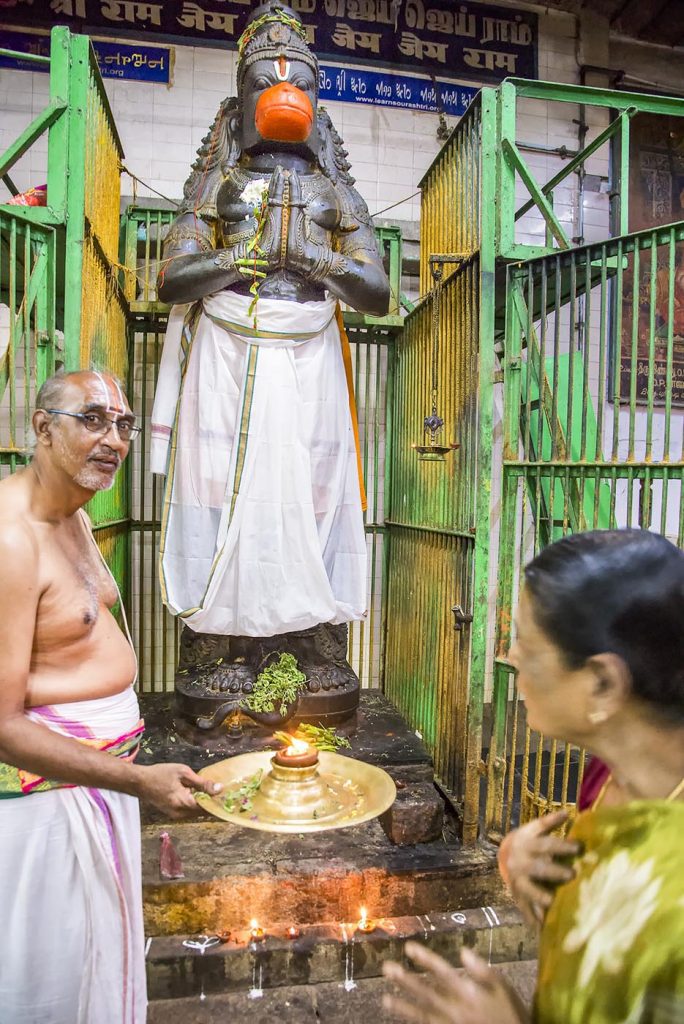
I met Shreya, 21, from Jharkhand, a state located more than 1,250 miles from Madurai. She and seven family members came to Tamil Nadu for a religious pilgrimage, and Madurai and its famous Meenakshi Temple were on their agenda. She says, “Walking around the old part of Madurai is like walking through an open-air museum; they speak one of the oldest languages in the world. There is such a rich culture here, and the heritage is quite well preserved. I love the fact that on every street you can find another colorful temple; on every corner there is a small shrine with flowers or lit oil lamps. It is obvious that religious practice is stronger in this state than in my own, and it is uplifting to see such strong devotion and faith.”
History and Stories
If there is one place where you can feel this devotion to the fullest, it is the Meenakshi Sundareshwarar Temple, popularly referred to as the Meenakshi Temple, one of India’s oldest and largest temples. It is dedicated to Goddess Meenakshi (a form of Parvati) and Lord Sundareshwarar (a form of God Siva). A prime example of Dravidian architecture, this temple is renowned for its exquisite, colorful façade and 14 slightly curved pyramidal towers, called gopurams. The tallest of these reaches 170 feet.
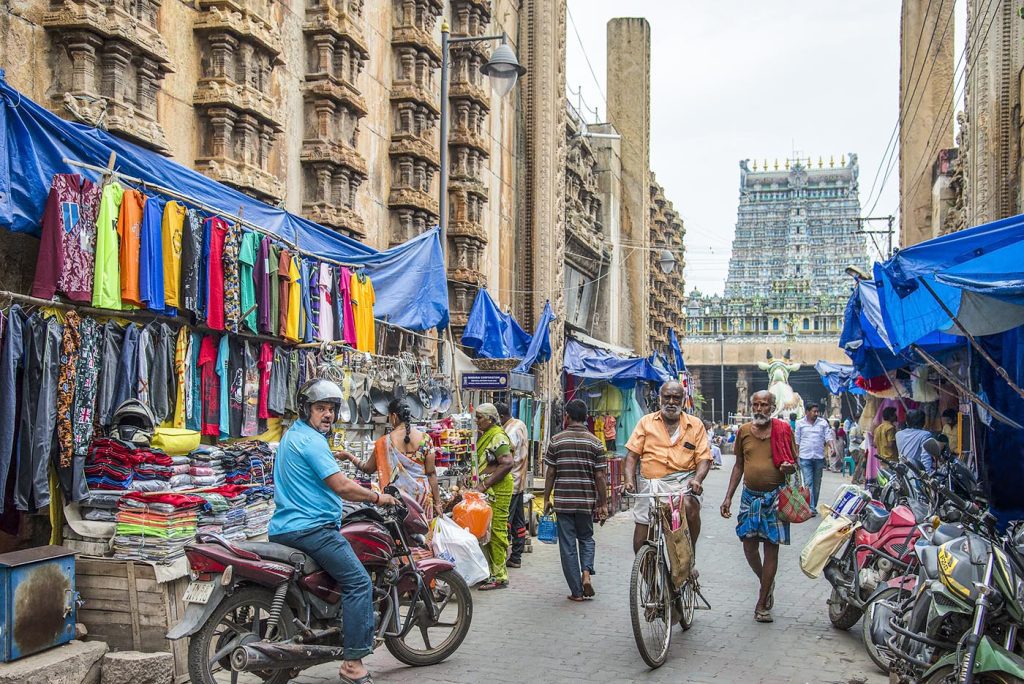
Historically, Meenakshi Temple is mentioned as early as the 1st century ce, and scholars claim it is as old as the city itself. The temple as it stands today was rebuilt throughout the 16th century and then repaired, renovated and expanded in the 17th century. Its enormous complex occupies nearly 15 acres in the heart of the dity. It has countless courtyards and mandapas (pillared halls), thousands of sculptures depicting Gods and mystical creatures, and a large pond, the Porthamarai Kulam, with golden lotuses floating on the holy water.
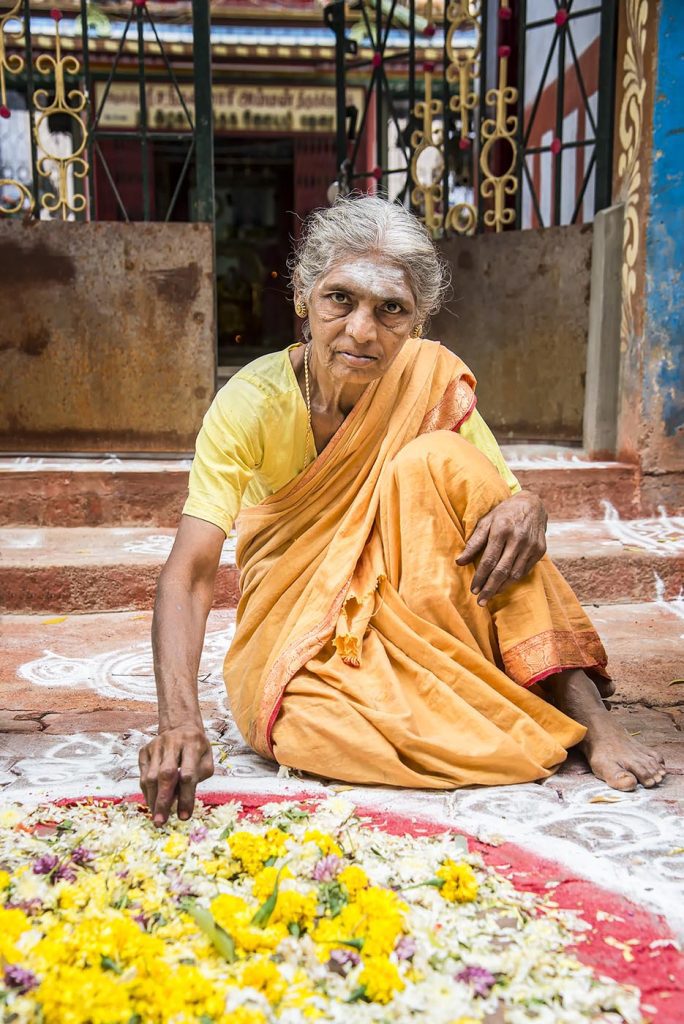
A distinguishing feature of this temple is the fact that God and Goddess are worshiped equally in the same place, in matching shrines about 100 feet apart. Several legends are attached to the Meenakshi Temple. One tells that a royal couple who were childless offered their prayers to Lord Siva, asking Him for a son. To their disappointment, a triple-breasted girl emerged from a sacred fire. When the couple expressed their concern about the girl’s abnormal appearance, a divine voice told them that the girl’s third breast would disappear as soon as she met her future husband. The relieved king named his daughter Meenakshi, and later she became his proud successor.
As the legend continues, Meenakshi ruled over the ancient city of Madurai and also tried to control the neighboring kingdoms by force. It is said that she was on her way to capture Kailash, the abode of Lord Siva, when Siva himself appeared in front of her. It was then that Meenakshi’s third breast disappeared and she knew instantly that she had met her better half. Siva and Meenakshi returned to Madurai where their wedding took place, with all the Gods and Goddesses as guests. Even today, the wedding ceremony is celebrated every year in April during a festival called Thirukalyanam (celestial wedding). This month-long festival attracts over a million devotees who attend several events, such as the Chariot Festival and the Float Festival. Even on regular days, about 10,000 pilgrims from all over India and beyond visit Meenakshi. One hardly hears any ring tones and doesn’t see any selfies, as mobile phones and cameras are banned. Modernity stays outside and pure devotion remains inside.
Saranya, who has been working as a hotel receptionist for 13 years, confirms, “A very large majority of the people who come to Madurai are here to visit Meenakshi Temple. I would say that 80 to 90% of them are Indians, traveling with friends or family and making a religious pilgrimage. We are honored to show them our heritage!”
Impressive Temples Nearby
Meenakshi is not the only breathtaking temple in Madurai. The best way to discover others is to wander around and ask the friendly denizens. One such is Koodal Azghar Temple, dedicated to Lord Vishnu, covering about 2.5 acres. Supposedly built by the Pandyas, the temple was noted in the great epics and poems of Tamil literature. The first mention could be during the Sangam period (300 bce to 300 ce), when. In the 16th century, pillared halls, sculptures and major shrines were added by the Vijayanagar and Madurai Nayak kingdoms, who held important celebrations and prayer ceremonies here.
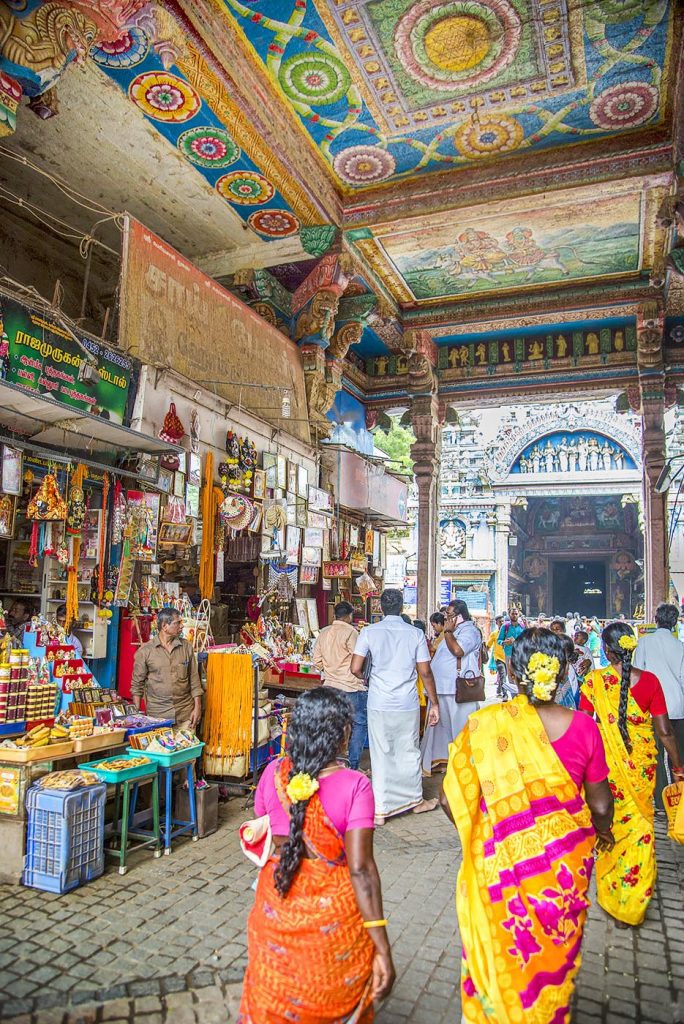
With its flamboyant Dravidian style, the architecture is a perfect representation of South Indian temples, with statues and columns of rare elegance—beautiful carvings and engravings on which different shades of colors have been added. In 2006, the temple was renovated using natural vegetable dyes and paints made from Kerala herbs. A unique feature is the presence of three different postures of Vishnu in close proximity. The compound protected by massive granite walls. Pass under the large gopuram into the main courtyard, you leave behind the noisy city and engulfed in peace and serenity. However, during the Tamil month of Vaikasi (May and June), annual festivities take place, the Dashavatara (ten main avatars of Vishnu) are staged and the Koodal Azghar Temple becomes very busy. Thousands of pilgrims come every day to offer their prayers.
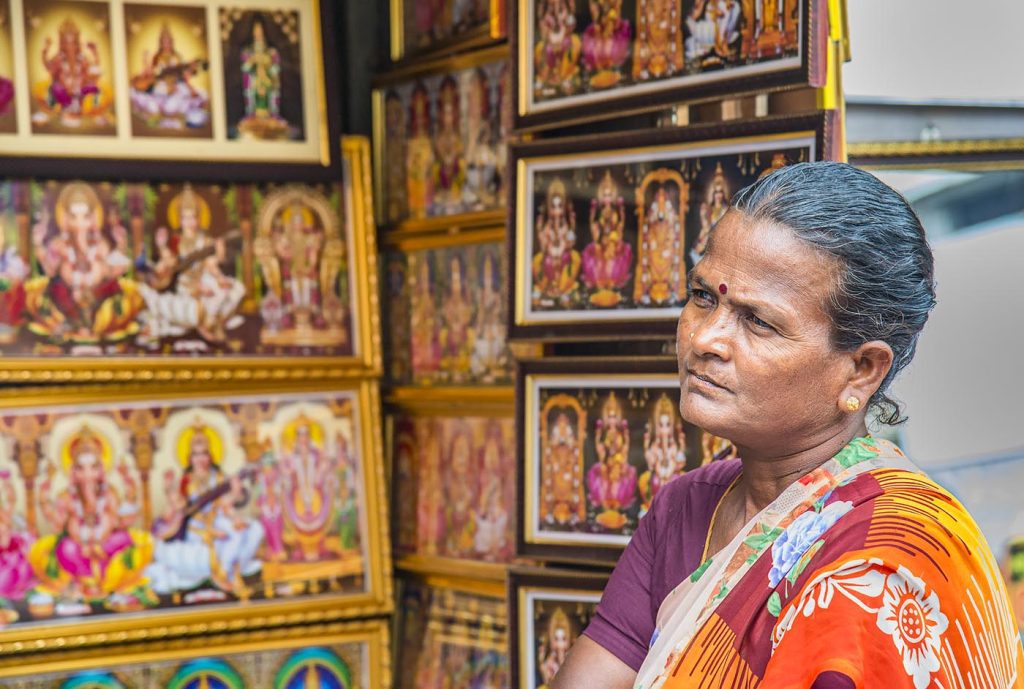
Whether it is to pray individually or sit and observe one of the six pujas that take place daily, Koodal Azghar Temple is the perfect place to witness the loyalty of the local people to their Deities.
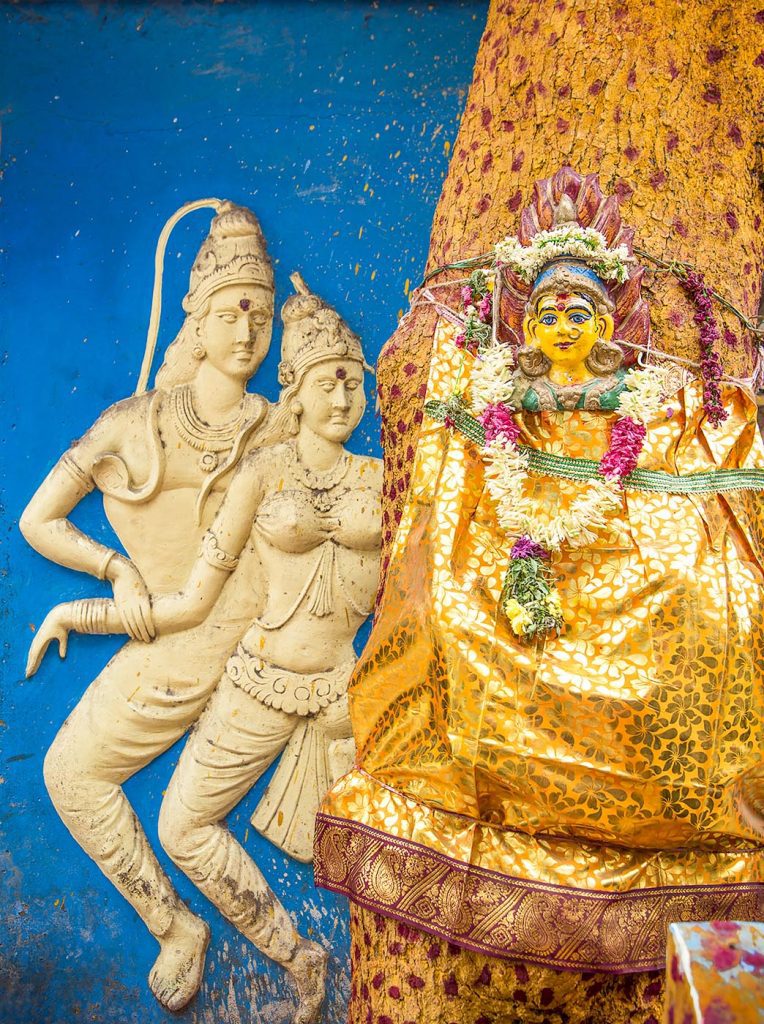
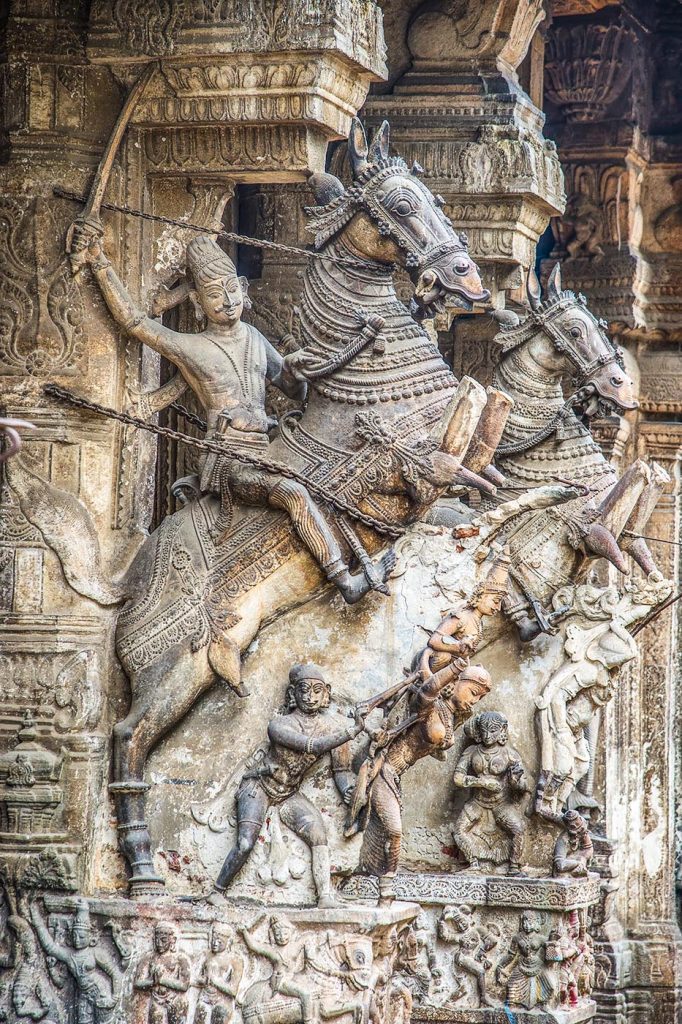
Those who fully want to discover the religious side of Madurai should also visit other temples, including Sri Veeraraghava Perumal Temple, Immayilum Nanmai Tharuvar Temple and Draupadi Amman Temple.
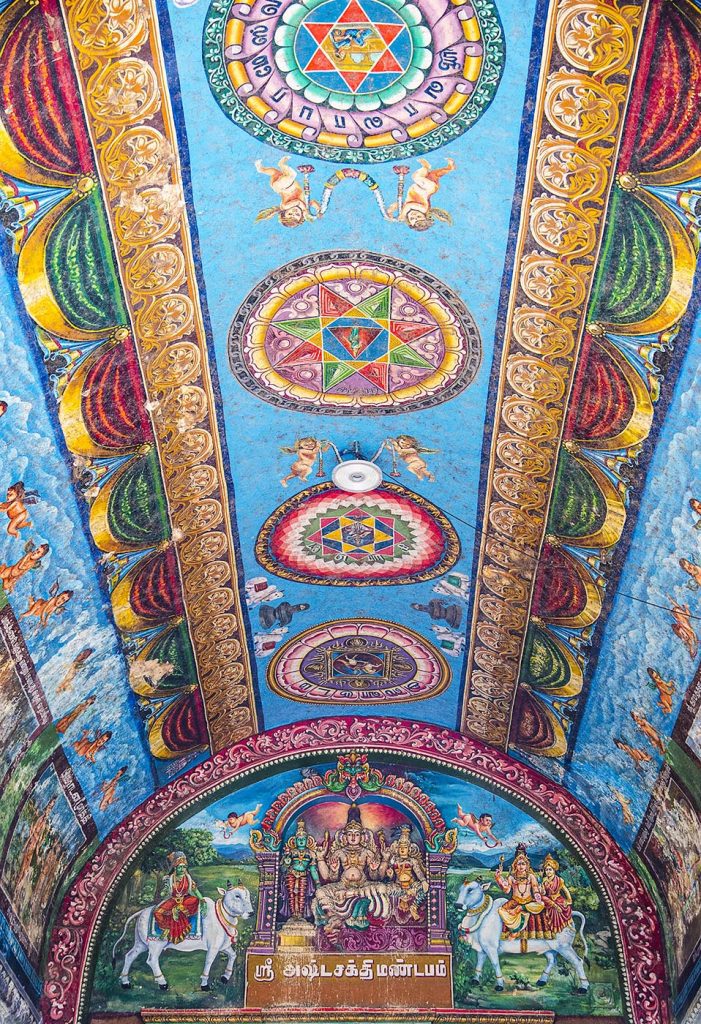

Conclusion
One of the oldest living places in the world, which once had links with ancient Greece and Rome, Madurai has adapted to modern times by using the past to uphold the present. It is a place where the highly logical urban planning principle of the Vedic era meets the chaotic and non-rational architecture of today, a place where ancient temples still welcome devotees from all over the world.

The cultural capital of Tamil Nadu, Madurai is not a city stuck in the past. On the contrary, it is an extremely lively scene where people can freely express their deep devotion in Hinduism. While Meenakshi Temple is the highlight of Madurai, the pulse of the city can be felt all around, so lose yourself in the small back alleys of the fascinating old quarter and be ready for a journey through time and space.
